CHAPTER 9
ANCIENT GIANTS OF AUSTRALIA, NEW ZEALAND, AND PACIFIC ISLANDS
I am convinced of the validity of contradiction. There are many worlds. Each is true, at its time, in its own fashion.
ERROL FLYNN
MAORI LEGENDS OF NEW ZEALAND
The lands down under hold vast resources of lost, forgotten, and mostly overlooked ancient history. The Aborigine tribes speak of alien visitors, lost cultures, mysterious monsters, and of course ancient giants. In the 1875 edition of the Timaru Herald, we can read about some of these ancient New Zealand giants:
A very large skeleton was found yesterday, about 7 feet below the surface of the sand on the Saltwater Creek spit. Mr. Bullock, the carter, in removing some sand for building purposes, dropped across this relic of a past age and brought the fragments to town. We have had an opportunity of inspecting them, and were struck by their symmetry no less than their great size. They appear to have belonged to a man of gigantic statue; but are so far incomplete as to render it difficult to ascertain the dimensions of his frame. The bones are much decayed, a fact which taken in connection with the dryness of the situation where they were found, probably indicates for them a great antiquity.1
The skull of this giant was supposedly big enough to hold the skull of a normal human just in its mouth alone. According to local Maori legend these giants were known as the Te Kahui Tipua and had perished in a great flood ages ago. Most of the discovered giant bones were found in New Zealand around the vicinity of the city of Timaru. Numerous reports of these giant skeletons of the Te Kahui Tipua were found up into the twentieth century. However, as in most cases, the bones have all gone missing, and all we are left with are the initial reports of their discovery, like the giant bones found in a cave near Port Waikato, about an hour’s boat ride south of Auckland. This story was kept alive by an article in N.Z. Truth dated September 29, 1965, with the headline of “Caves Could Reveal Secret of Tall Maoris.”2 This pair of giant Maori skeletons has also mysteriously vanished.
AUSTRALIA’S DREAMTIME GIANTS
According to indigenous Australian beliefs, the giants of the Dreamtime were a race of giant hominids that roamed the Australian continent long before the appearance of the first Aborigines. Australia is also home to twenty-thousand-year-old human footprints, and just recently Cretaceous dinosaur tracks were found on Broome’s Cable beach in Western Australia. As for the ancient Australian giants, they are survived by their massive stone tools, giant molars, and the monstrous footprints they left fossilized in the rocks.
In New South Wales, the fossil of an Australian giant was discovered near Bathurst, alongside huge stone tools and hand-axes of tremendous weight and size. The fossicker that discovered the ancient haul believed the bones belonged to somebody that could have been up to twelve feet tall. This discovery reaffirms the Aborigines’ belief that a giant race of tool-wielding hominids preceded them on the Australian continent by thousands of years. Rogue Australian archaeologist Rex Gilroy writes about these mysterious Aussie giants in his 1995 book, Mysterious Australia.
I found among other tools a great club weighing 21 lbs. displaying a handle chipped out to form a gripping surface and thumb rest for a mighty hand larger than any living man’s. By now I had not the slightest doubt that a race of giant hominids once occupied the Australian continent. Pondering these finds I asked myself if these sites represented three tool-type developmental phases in the history of the race of giant men, or did they represent three distinct races of giants? Over the following months I numbered other sites, and at one of these, site 5, I recovered a huge hand-axe, 25 lbs. in weight, which makes it the heaviest stone artifact yet found at Bathurst. . . . Estimates for the actual size of these men range from 10 to 12 ft. tall and over, weighing anything from 500 to 600 pounds or more. There were, however, even taller giants. From fossiliferous deposits north of bed 3 site 1, I excavated from a depth of 6 ft. below the surface a fossil lower back molar tooth measuring 67 mm. in length by 50 mm. times 42 mm across the crown. From a reconstruction of the probable size of the original jaw from which this molar tooth came we arrive at a complete jaw of approximately 42 cms. in length, 36 cms. wide and with a depth of about 90 cm. The Cranium must therefore have been 60 cm. in length across the dome, by 21 cm. depth. Thus, the complete skull must have been 110cm. depth, about 36 cm. wide and 60 cm. in length. Of course I wish my readers to regard these measurements as nothing more than suppositions. But, if my measurements are approximately correct, the enormous beast to whom this hypothetical skull belongs to would have been at least 25 ft. tall, weighing well over 1,000 lbs!3
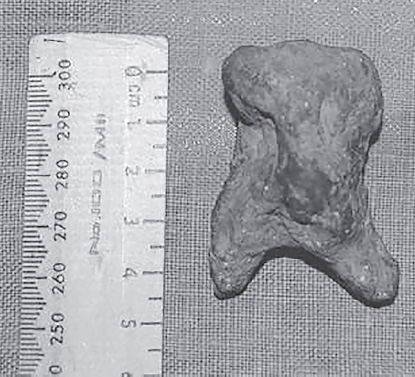
Fig. 9.1. Giant hominid molar (photo by Rex Gilroy, 2012)
French sailors discovered a tribe of “formidable giants” on Shark Bay in Western Australia in 1803. Historian Shino Konishi recounts the French sailors’ terrifying encounter with the giants, thanks to the ship’s zoologist and chronicler, François Péron, who documented the odd encounter. Konishi writes, “These giants (there were a hundred or more) carried great shields and enormous spears; long, black beards grew down to the middle of their chests; they ran like furies along the beach, brandishing their weapons; they uttered great, long cries and threatened [the] fishermen, who fled precipitately toward the ship.” Péron himself recalled that, “the most ancient chronicles that we possess concerning this part of New Holland [or “Australia” as we tend to call it these days] portray it as inhabited by a race of formidable giants.”4
PACIFIC ISLAND GIANTS
In the winter of 1899 Austin’s Hawaiian Weekly published a story about giants. This one pertained to an eight-foot-tall-Hawaiian chief, who was interviewed by the daring travel writer Miles Austin.
The ancient hermit reclined comfortably upon his pile of bones, telling me tales of Hawaiian folklore which, under less distressing circumstances no doubt I should have found instructive, while I crouched upon the rock close to the precipice which formed the back wall of the hut. At last mine host said it was time we entered the cave. “That rock you are sitting upon stops the entrance.” He picked a long stick, evidently for this purpose, and used it as a lever to pry the rock away from the precipitous wall. The rock was so evenly balanced on rolling boulders that it easily swung out into the room, disclosing the entrance to the cave, which was about three feet square. “I hope you have good nerves,” said the hermit, as he busied himself preparing a flaming torch made from kukui nut oil. “You will see a great many skeletons, but, of course, being a doctor, human bones cannot have much terror for you.” “Yes; I have done a great deal of dissecting in my time,” I answered as bravely as I could. We had to crawl in on our hands and knees to enter the cave, but once having entered, we were able to stand erect without difficulty, and in some places the roof was perhaps eight or nine feet high. The faint roar of water could be heard in the deep recesses of the cavern, which, my guide explained, was the underground channel of the spring which caused the little oasis in the rocky desert. On either side of the cave, laid out on ledges or benches hewed out of the solid rock, were hundreds of skeletons that looked ghastly in the feeble light of the torch. The floor of the cave was strewn with loose bones, and it was impossible to avoid making football of the skulls as we walked along. Mine host chattered pleasantly, even cheerfully as we went, called this or that giant chief ’s skeleton by name, relating anecdotes of his life and deeds of valor. It was doubtless very interesting and instructive, but I must confess that I felt very uncomfortable. . . . We had proceeded perhaps fifty yards or more, when my ancient guide stopped and turned around so as to face me. Reaching to the ledge on the left, he selected the shin-bone of one of the largest skeletons in the cave. “What a giant this fellow must have been,” he said. “Surely not less than eight feet tall.”5
The Solomon Islands, an island archipelago near Papa New Guinea in the South Pacific, also has an interesting history of giants, with astonishing tales both ancient and modern. According to local reports, and the research of writers like Marius Boirayon and Jonathan Gray, it’s said that giants still live inside the vast cave systems running underneath the rain forest mountain ranges of Guadalcanal. Could these accounts of modern giants be true?
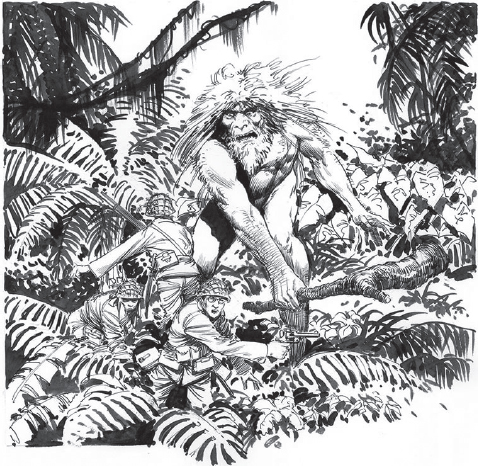
Fig. 9.2. Japanese Soldiers Encounter a Solomon Island Giant, Brian Snoddy (2016)
Ezekiel Alebua, the former prime minister and previous premier of Guadalcanal recounted how when he was a child his father took him to a cave in east Guadalcanal to see the burial remains of a giant skeleton that was at least fifteen feet in length. Author of Dead Men’s Secrets Jonathan Gray writes:
To the local population on Guadalcanal, giants are common knowledge. Interaction with giants has been frequent through their history. The giant’s territory is a 1,000-square-kilometre area of mountains covered in tropical jungle west of Mount Popomanaseu. Local tribes, not only in Guadalcanal, but in most parts of the Solomon Islands have recorded a tumultuous historical relationship with the giants. The area is rich in memories of such encounters. Giants allegedly still survive on Santa Isabel Island. Although they are fewer in number than on Guadalcanal, there are two areas where they live. Any local person is able to steer you in the right direction. Another of the Solomon Islands is Choiseul. The island of Choiseul is not small. Some 300 kilometres long by 80 kilometres wide, with numerous villages. But there is one large area of its interior where no village exists. And apparently with good reason . . . living giants. In the Kwara’ee region, north of there, is a large burial place scattered with giant skeletons. They lie all over the ground. In a nearby village stands a hut, one of whose main support poles is a human femur bone nearly 8 feet long!6
The mountain ranges of Guadalcanal have been attracting prospectors since the 1970s when gold was first discovered there. By the late ’90s the Ross Mining Company had a monopoly over the local gold-digging business and were in the process of bulldozing an area in northern Guadalcanal when one of their huge bulldozers broke down. Leaving the ten-ton blade behind, the workers hauled the bulldozer back to the workshop and promptly called it a night. The next morning, when bulldozer and crew returned to the site, they were astonished to find that the ten-ton blade had vanished! Everyone on the team was in disbelief. How could such a heavy object vanish without a trace? A search party for the blade was soon organized, and after about twenty minutes one of the workers discovered a trail of giant human footprints leading up to a small hill with a cave entrance opening. The footprints ended near the base of a cave, and the mammoth blade was discovered discarded about a hundred feet away.
These were the same living giants that former Guadalcanal premier and finance minister Victor Ngele encountered during a scouting expedition on Gold Ridge. Due to bad weather and a slippery road, their Toyota Hilux 4WD truck bogged down off the road in the mud. With their vehicle unmovable, Ngele and his companions made the trek back to the nearest village for help. When they returned they were surprised to find their Toyota back on the road, but even more shocked to see two giant fifteen-feet-tall men standing on each end of the muddied truck. In fear, everyone scrambled away from the Toyota, with the giants dashing into the forest and Ngele and his crew returning the way they came. About a half hour later, after summoning the courage to return to the site, Ngele examined the giant footprints and determined that the two giants had picked up the truck and placed it safely back on the road.
Any giant-seeking adventurer might want to book a trip to the Solomon Islands in the near future and do some firsthand investigating into the fascinating possibility that some members of that lost race of giants are still alive. For even more adventures into the mysterious, you can take a day’s flight over the endless blue Pacific until landing on Easter Island, home of those enigmatic giant stone head statues known as the Maoi. Some of these massive megalithic statues have recently been shown to have bodies as well. The archaeologists from UCLA who discovered them were blown away by the long Maoi bodies resting under ten feet of Easter Island dirt. The bodies even showed strange undeciphered petroglyphs and intricately carved symbols. Could these towering Maoi statues have been built by the ancient giants of Easter Island? According to explorer Carl Friedrich Behrens, a member of the Dutch expedition led by Jacob Roggeveen to Easter Island in 1722, when they approached the island they were greeted by giant natives more than twelve feet high! Behrens gives a firsthand report of this encounter, saying, “With truth, I might say that these savages are all of more than gigantic size. The men are tall and broad in proportion, averaging 12 feet in height. Surprising as it may appear, the tallest men on board of our ship could pass between the legs of these children of Goliath without bending the head.”7 This account plus the colossal stone statues add weight to the presence of giants on Easter Island. There is also a massive megalithic stone wall with masonry so fine that it reminds one of the megalithic structures in Peru and Egypt. Usually when there are tales of ancient giants in a certain area you can also find prehistoric megalithic stoneworks within the vicinity of the legends.
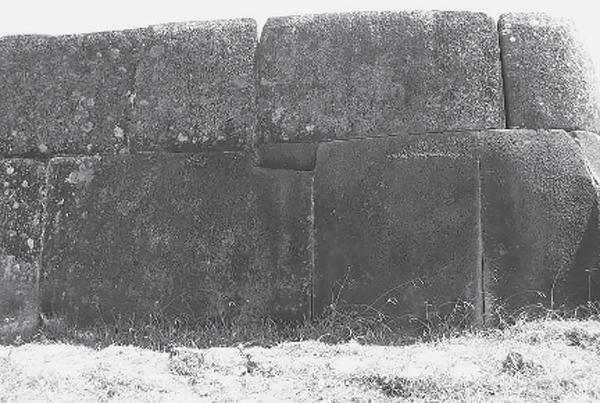
Fig. 9.3. Megalithic stone masonry at Ahu Vinapu, Easter Island (photo by Signalhead, 2009)
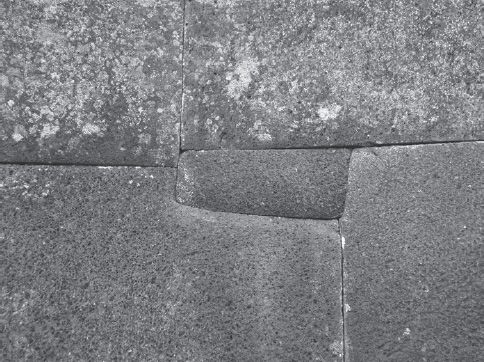
Fig. 9.4. Close-up of mortarless masonry at Ahu Vinapu, Easter Island (photo by Koppas, 2009)
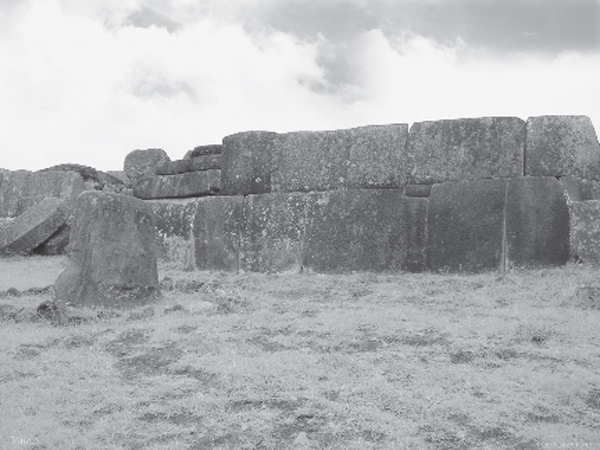
Fig. 9.5. Megalithic ruins of Easter Island (photo by Valeria 04, 2009)
As for their counterparts in Australia, it seems that those giants have since all but vanished. And the lands of down under remain more notable for their extreme remoteness, Crocodile Dundee, boxing kangaroos, shark attacks, and the miles of endless beaches that surfers dream upon.